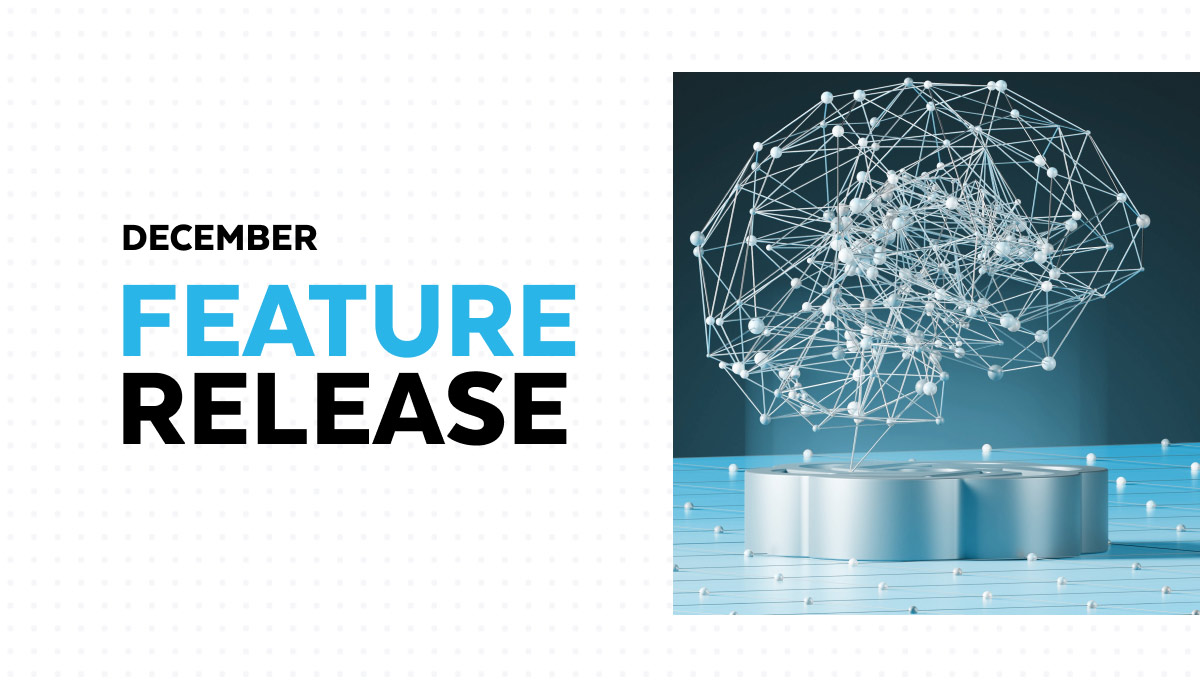In the final month of 2023, Snowflake released features around Snowflake Cortex functions, Snowpark ML, cost management and more. Read on to learn more about everything we announced in December.
Snowpark Enhancements
GPU-powered compute with Snowpark Container Services – public preview in select AWS regions
Snowpark Container Services is a fully managed container offering that helps you deploy, manage and scale containerized code, whether it’s a large language model (LLM) or a full-stack app, without having to move data out of Snowflake. Learn more about functionality and region availability here.
Feature engineering, preprocessing, and model training with Snowpark ML Modeling API – general availability
The Snowpark ML Modeling API enables the use of popular Python ML frameworks, such as scikit-learn and XGBoost, for feature engineering and model training without the need to move data out of Snowflake. Learn more here.
Distributed hyperparameter tuning for ML model training – public preview
Snowpark ML provides distributed execution of hyperparameter optimization using scikit-learn’s GridSearchCV and RandomSearchCV methods to accelerate model development on both single node and multiple-node warehouses. Learn more here.
Advanced Analytics
Forecasting and anomaly detection with Snowflake Cortex ML-based functions – general availability
Snowflake is on a mission to democratize AI and machine learning for all data teams. Now every Snowflake SQL user can generate time series forecasts and detect outliers in their data with Snowflake Cortex Forecasting and Anomaly Detection functions. These simple SQL commands are powered by ML under the hood with the elasticity and near-zero operations of Snowflake’s engine — no ML expertise required. Learn more here.
Cost Management
Get account-level spend and usage metrics through an intuitive UI – public preview
Customers can go to a single, centralized location in Snowsight called the Cost Management Interface to obtain visibility into cost and price-for-performance metrics for their workloads. As part of the Cost Management Interface, the Account Overview provides admins with account-level spend and usage metrics such as the most expensive queries, while also enabling deeper drill downs into any of the metrics. It further shows how the effective value of a Snowflake credit changes over time. Learn more here.
Developer Experience
Snowflake brings broader support to Python developers with Snowflake Python API – public preview
The Snowflake Python API is a unified library that seamlessly connects Python with Snowflake workloads. It provides comprehensive APIs for interacting with core Snowflake resources across data engineering, machine learning, and application workloads.
This launch expands the Python API’s capabilities to include Tasks/DAGs, Snowpark Container Services, warehouses, databases, tables and schema.
The Snowpark client empowers data professionals to leverage familiar DataFrame constructs within Python, but managing additional dependencies and scripting database objects in SQL often remains a necessity. The Snowflake Python API bridges this gap, unifying the overall python APIs, and bringing Snowflake closer to delivering a truly first-class, end-to-end Python experience for developers. Learn more here.
Snowflake Marketplace
Snowflake customers can tap into Snowflake Marketplace for access to more than 2,300 live, up-to-date and ready-to-query third-party data sets, data services and Snowflake Native Apps all in one place (as of October 31, 2023). Here are all the providers who posted new listings in December:
- BrainForge – Real World Data
- Abc – Health and Life Sciences
- Acoustic, L.P. – Customer 360
- Audience Acuity – Consumer Identity
- Serif Health – Price Transparency
- AdImpact – Attribution Analysis
- Union All – Data Discovery
- Snowplow Analytics Ltd – Customer 360
- BigPicture – Market Analysis
—-
Forward-Looking Statements
This post contains express and implied forward-looking statements, including statements regarding (i) Snowflake’s business strategy, (ii) Snowflake’s products, services, and technology offerings, including those that are under development or not generally available, (iii) market growth, trends, and competitive considerations, and (iv) the integration, interoperability, and availability of Snowflake’s products with and on third-party platforms. These forward-looking statements are subject to a number of risks, uncertainties, and assumptions, including those described under the heading “Risk Factors” and elsewhere in the Quarterly Reports on Form 10-Q and Annual Reports of Form 10-K that Snowflake files with the Securities and Exchange Commission. In light of these risks, uncertainties, and assumptions, actual results could differ materially and adversely from those anticipated or implied in the forward-looking statements. As a result, you should not rely on any forward-looking statements as predictions of future events.
© 2024 Snowflake Inc. All rights reserved. Snowflake, the Snowflake logo, and all other Snowflake product, feature, and service names mentioned herein are registered trademarks or trademarks of Snowflake Inc. in the United States and other countries. All other brand names or logos mentioned or used herein are for identification purposes only and may be the trademarks of their respective holder(s). Snowflake may not be associated with, or be sponsored or endorsed by, any such holder(s).
